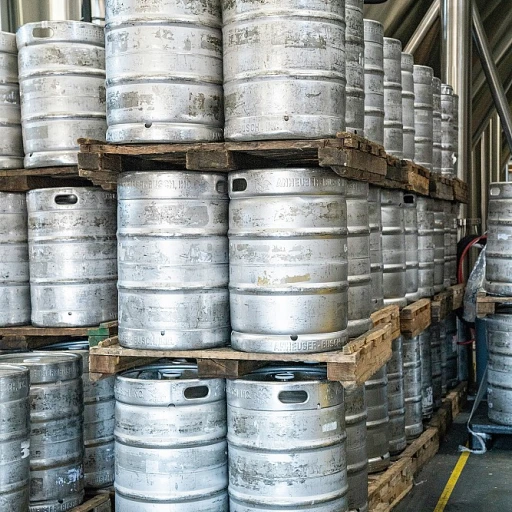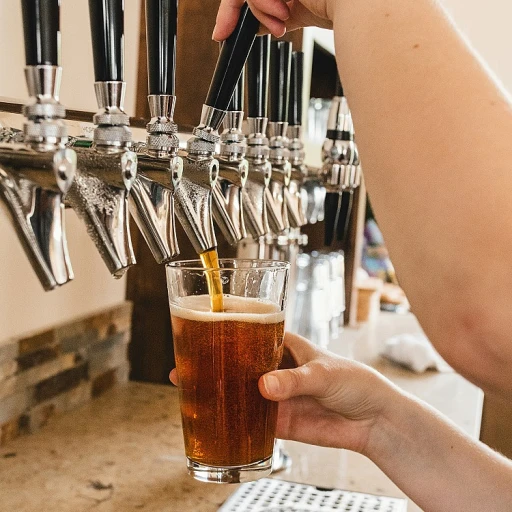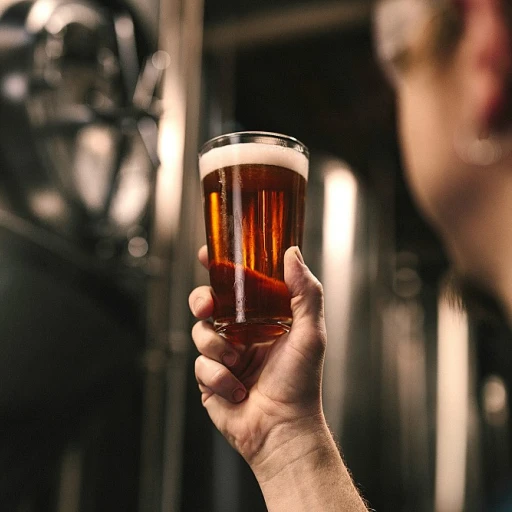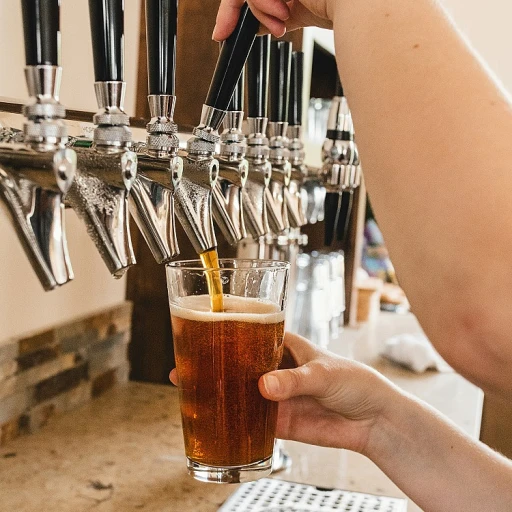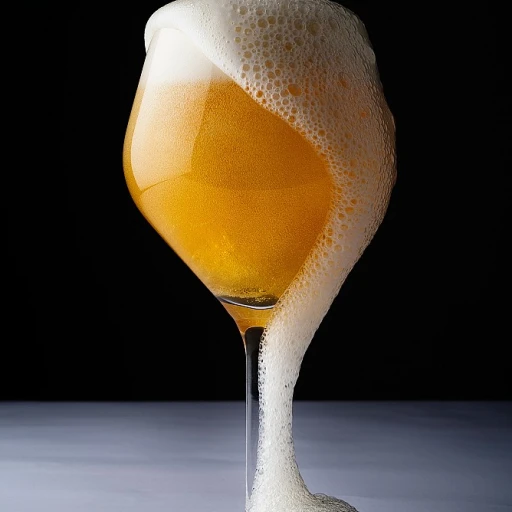
The Role of the Mash Tun
The Heart of the Brewing Process
The mash tun is an essential component in the beer brewing process, transforming grains into a sweet liquid known as wort. This critical step takes place after the grains have been carefully selected and milled. Inside this vessel, hot water is introduced to the milled grains, initiating a process called mashing.
During mashing, the hot water activates enzymes in the malted grains, breaking down starches into fermentable sugars. The result is a sugary liquid that has absorbed the desirable flavors and aromas from the grains—setting the stage for the next steps in brewing.
The effectiveness of the mash tun hinges on several factors, such as the quality of the malts, the water-to-grain ratio, and precise temperature control. While the mash tun does the heavy lifting in converting starches to sugars, it also requires careful monitoring to ensure consistency and quality in the final product.
Understanding the mash tun's role is crucial for both homebrewers and commercial brewers. This knowledge not only helps in producing quality beer but also aids in optimizing the use of brewing equipment. If you're interested in broadening your perspective on beer brewing techniques, you might also enjoy exploring more about how Krups beer dispensers can complement your brewing setup.
Lauter Tun: Separating the Wort
Efficient Wort Separation: The Lauter Tun
The lauter tun plays a crucial role in the beer brewing process, as it is where the separation of the liquid wort from the solid grain materials occurs. This step is vital to remove the residual grains that can negatively affect the clarity and taste of the final beer product. The functionality of the lauter tun is centered around an intricate process involving a false bottom and strategically placed outlet ports, which allows the wort to be drained smoothly while leaving the spent grains behind. This separation not only enhances the clarity of the wort but also ensures a clean fermentation process. Moreover, the lauter tun's design is engineered to maximize efficiency. The shape and depth of the vessel are critical in promoting optimal fluid dynamics, which can enhance the quality of the beer. For those who are keen to store and serve their homebrew efficiently, understanding the inner workings of a lauter tun is invaluable. Knowing how to properly handle the wort after separation can lead to better brewing outcomes in terms of flavor and clarity. For more insight into efficiently dispensing your brew, you might consider learning about the magic of a kegerator, which can elevate your beer tasting experience at home.Materials and Design: Stainless Steel and More
Essential Brewing Materials and Design Considerations
When diving into the brewing process, understanding the construction and materials of the key equipment is important, particularly for components like the mash tun and lauter tun. The selection of materials and design can greatly influence not only the effectiveness but also the longevity of your brewing equipment.- Stainless Steel: The dominant material of choice in modern brewing, stainless steel offers several advantages. It is durable, resistant to corrosion, and easy to clean, which maintains the purity of flavors throughout the brewing process.
- Plastic and Copper: Though less common today, you'll still find some brewers using plastic for hobby brewing due to its lightweight nature and cost-effectiveness. Copper is occasionally used, providing excellent thermal conductivity, but its reactivity and maintenance challenge its practicality against stainless steel.
- Design Features: The design of the mash tun and lauter tun is crucial. A well-designed tun should support even heat distribution, easy grain separation, and effective wort drainage. Features like false bottoms, manifold systems, and sparge arms assist in these processes.
- Customization and Scalability: Many modern systems allow customization to suit specific brewing needs. Scalability is also a factor to consider. From home brewing systems to large scale commercial operations, ease of scaling up production is advantageous.
For additional insights into enhancing your home brewing journey, check out this guide on pouring a beer from a keg.
Temperature Control and Its Impact
Mastering the Thermal Precision in Beer Brewing
Temperature control is a crucial aspect of brewing that significantly impacts the final product. In the mash tun, maintaining a specific temperature range is essential for the effective breakdown of starches into fermentable sugars. Enzymes responsible for this conversion operate optimally at different temperatures. For instance, amylase enzymes become active in particular temperature zones, facilitating the production of the wort rich in fermentable sugars. Once the conversion in the mash tun is complete, the process moves to the lauter tun. Here, maintaining the right temperature ensures an efficient separation of the wort from the grain bed. This precise temperature control during the transition from mash to lauter can influence the clarity and quality of the wort being produced. Modern brewing equipment often incorporates advanced temperature management systems. Technologies such as digital controllers and insulated vessels aid in maintaining consistent temperatures. This consistency is vital, as temperature fluctuations can lead to inefficiencies and potentially undesirable characteristics in the beer. Moreover, homebrewers and commercial brewers alike leverage these technologies to replicate successful batches reliably and explore new recipes with precision. Harnessing sophisticated thermal systems maximizes the enzymes' potential, ensuring each batch reaches its full flavor potential. Understanding the nuances of temperature control in the brewing process not only enhances the efficiency but also the enjoyment of creating a perfectly balanced beer. It’s a dance of science and creativity, mastering the delicate balance that makes brewing both an art and a science.Brewing Equipment: From Mash to Boil Kettle
Progression from Wort Separation to Boil Kettle
After the wort has been efficiently separated in the Lauter Tun, it's critical for brewers to swiftly move on to the next step—ensuring optimal use of the brewing equipment towards the boil kettle. This progression keeps the brewing process smooth and efficient, influencing both the efficiency and the quality of the final beer product.
The transfer process, typically done through pumps or gravity, is vital as it sets up the wort for the boiling stage where hops are added for bitterness, flavor, and aroma. During transfer, maintaining a controlled temperature is crucial to prevent any unwanted microbial activity or flavor taints, a strategy emphasized throughout temperature control discussions in previous sections.
Furthermore, the design and materials of all equipment involved, from the mash tun to the boil kettle, play a significant role. Breweries often choose stainless steel for its durability and ease of maintenance, paralleling the considerations in equipment materials and design detailed earlier. Ensuring all components are sanitary at this stage helps in achieving a high-quality brew.
Ultimately, the interplay between effective wort separation in the lauter tun and the subsequent transition into the boil kettle is pivotal in crafting a beer that meets the brewer's exacting standards. This smooth workflow is part of the broader system that aligns with best practices in brewing, ensuring a harmonious and productive brewing environment.


